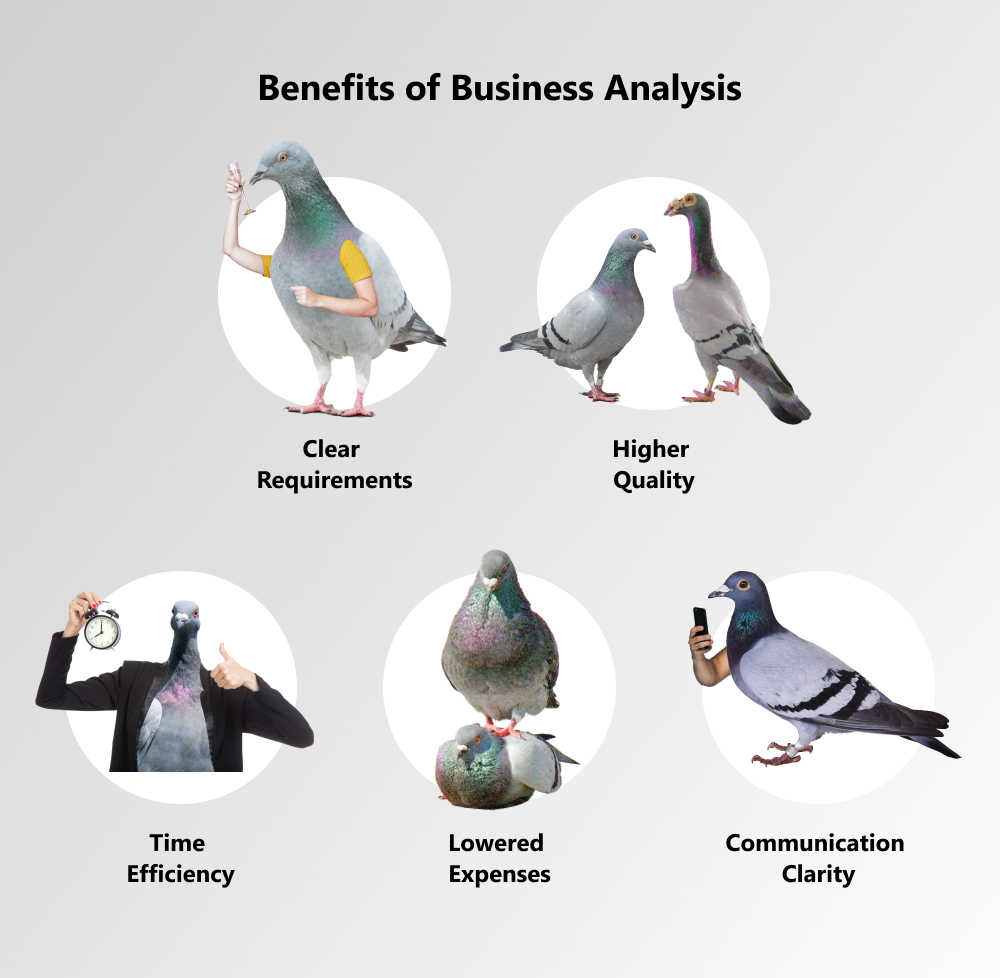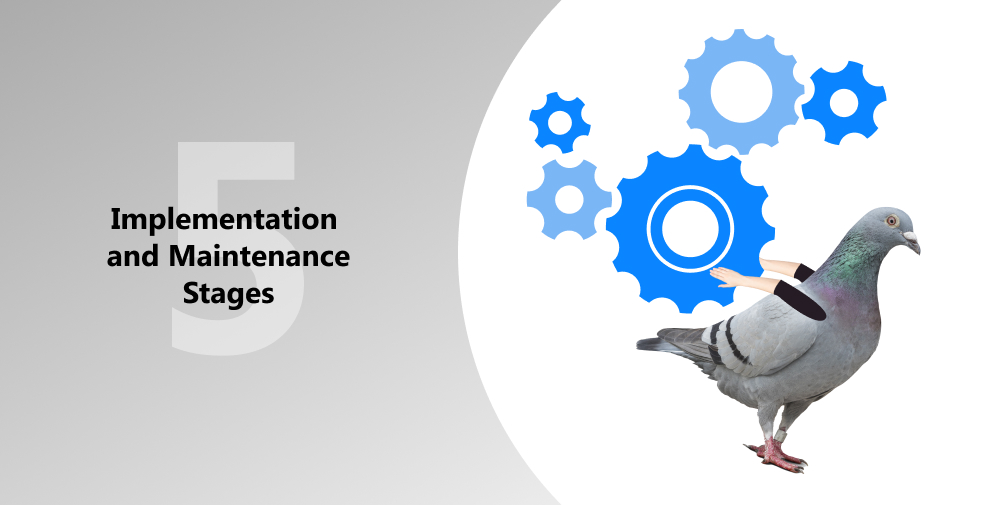Even though every new product development process starts with a groundbreaking idea, it may not be the right one for your customer needs. What you see as a potential success might not, in reality, find its way to the target audience or survive the competition. Furthermore, even a new product in demand might struggle to generate enough profits for your business. And on top of this, a market- and business-approved idea will not always bring adequate results if the implementation is done wrong. All this however can be addressed by one simple, well-executed process — Business Analysis (BA). Business analysis refers to the stage of the new product development process. Let's dig into more detail.
written by:
Aliaksandra Tsikhanovich
Even though every new product development process starts with a groundbreaking idea, it may not be the right one for your customer needs. What you see as a potential success might not, in reality, find its way to the target audience or survive the competition. Furthermore, even a new product in demand might struggle to generate enough profits for your business. And on top of this, a market- and business-approved idea will not always bring adequate results if the implementation is done wrong. All this however can be addressed by one simple, well-executed process — Business Analysis (BA). Business analysis refers to the stage of the new product development process. Let's dig into more detail.
Contents
BA Briefly Introduced
Business Analysis refers to the stage of the new product development process which allows defining the viability of that new product for your business. This stage often gets neglected, as its benefits are less tangible than those of other processes. Furthermore, many companies believe they know exactly what they want and, thus, believe they do not require a business analyst. However, there is often a big gap between what management wants and what the business needs. When Business Analysis is done correctly, it ensures that the right solutions are being identified and implemented and extra costs, time, and effort are all reduced to a minimum. It’s a process that gains little credit for often determining the fate of the new project.
Below are five of the most common reasons for software projects to fail, according to Forbes.
As comes from our experience, business owners tend to save money at the initial stage of project launch and often cut costs at the expense of such components as business analysis. Some are self-assured that they know exactly what the target audience needs without doing much research. Or they actually have done some research but due to the lack of in-house expertise, the results are limited and far from being enough.
Or innovators pick the wrong team whose manager does not suggest having a business analyst on the team and blindly follows the client’s development strategy. This can be the case when the business selects the cheapest development option. But as you surely know, it’ll cost more in the end.
Meanwhile, all of these can be prevented by hiring a qualified business analyst. Let’s have a deeper look at the Business Analysis concept in order to understand how.
Business Analysis in More Detail
Business Analysis can be defined as a practice that allows a company to predict the success or failure of a potential new product, based on precise collected data, instead of best guesses or a hastily put-together business case. Moreover, after the product idea has been validated, it generates a detailed execution plan that is aligned with business objectives and allows turning that idea into profits, while avoiding unnecessary (and costly) drawbacks, as well as potentially overly optimistic expectations.
Furthermore, a business analyst is someone who can play the role of an interpreter between stakeholders, customers, managers, and different departments working on the project to ensure that new product owners’ needs and requirements are aligned with all different business needs and requirements, as well as correctly translating the instructions for the engineering team and following throughout the entire new product development process. This ensures that the outcome will match the initially predicted business value.
Meanwhile, even though Business Analysis is defined as one of the initial stages of the new product development process, the analyst’s function doesn’t end with this stage. The BA’s role is ongoing throughout the whole project — from planning to design, development to maintenance/hypercare. Furthermore, due to wide industry and business knowledge, business analysts often take over a project manager position for smaller businesses.
Business Benefits of the Analysis Stage
As highlighted earlier, business analysis is a crucial stage for the future success of the project. Among the numerous benefits provided by this process, we would like to highlight the following:
- Clear Requirements. Having technical requirements well-aligned with business objectives and customer needs from the very start can help to avoid a lot of frustration during the development process, as well as with the final new product. As a result, it leads to significantly fewer re-makes and adjustments to the product idea.
- Higher Quality. Clear requirements also translate into a universal alignment of expectations and deliverables. Meanwhile, a well-established strategy reduces the number of errors and deviations. Hence, the right tasks are implemented correctly from the very start, resulting in a higher quality development experience and final product. Furthermore, the analyst’s advice helps to create a new product that better fits market needs as well.
- Time Efficiency. Even though the inclusion of Business Analysis adds an additional stage to the new product development process, it truly pays off in the long run. The explicit requirements and well-established process flow help to avoid spending extra time on additional discussions due to initial miscommunication, as well as, again, various re-makes and adjustments. Moreover, BAs help to foresee possible project gaps and prepare for them in advance, allowing timely new product delivery.
- Lowered Expenses. Less time spent on the development process and fewer unforeseen drawbacks equal to fewer expenses. Moreover, clearly identifying needs and making necessary changes at the early stage is much cheaper than conducting those changes when the new product is already built.
- Communication Clarity. Miscommunication is considered one of the primary reasons for project failures. Hence, communication clarity provided by the business analyst reduces the risk of misunderstandings and, therefore, makes the project more efficient.
Stages of Business Analysis
Now that we discussed the benefits of the process of Business Analysis and highlighted its importance, it is time to look at the specific stages to better understand how these benefits are delivered and what to expect when introducing this important step in the development process for your project.
1. Clarifying the Project Idea
This step is designated for finding out and understanding what the customer wants and what purpose the future application is supposed to serve.
First, business analysts identify all the people involved and interested in the project — its stakeholders. This includes not only potential customers and new product owners but also partners, competitors, teams working on the project, etc.
Then, background information is collected: the latest technologies and trends, the state of the industry, and other external factors that can affect the project, such as laws, culture, politics, economics, etc.
Another significant part of the discovery stage is conducting interviews and questionnaires with all key stakeholders to identify their needs and challenges, as well as the new product ideas and expectations. This stage of Business Analysis is crucial to define a unanimous idea that fits all stakeholders and avoid building a completely different product than the one envisioned by the client.
Furthermore, the business analyst often plays the role of advisor narrowing down what is wanted to what is needed, to ensure a beneficial solution that is built efficiently and practically, with only the useful features included.
2. Establishing the Communication Bridge
As mentioned earlier, business analysts act as intermediaries between various stakeholders and teams. Their job is to understand the underlying roles and operations of each team as well as business needs and requirements clarified in the previous stage so that they can make knowledgeable decisions, predictions, and suggestions. The higher the amount of continuously gathered information and feedback is, the easier and quicker it is to recognize the necessary improvements and changes.
Furthermore, as BAs better understand the language of each team and stakeholder, as well as what their priorities are, they can translate requirements and concerns in a comprehensible way for all parties, significantly reducing miscommunications risk. Finding a common language between non-tech parties and engineers through a mediator contributes to much quicker and more precise results.
3. Defining the Project Scope and Strategy
Once it has been identified who the project is for and what issues it is supposed to solve, the project goals can be defined. Once the goals are defined, it becomes possible to brainstorm and determine specific actions that need to be taken to achieve these goals. These measurable actions and deliverables, in turn, establish the scope of the project, which can also be influenced by the earlier-analyzed external factors and current technological trends, as well as by the identified risks, business impact, cost-benefit ratio, and other factors.
The BA’s understanding of the functions and roles each team plays in the development process helps to have a clearer vision of the whole picture and, in collaboration with team leaders, to distribute the tasks most efficiently.
At this point, it is also possible to determine a project delivery plan and forecast the required timeline and budget. The Business Analyst’s industry knowledge, gained experience, and reliance on statistical data allow making realistic estimations of the above-mentioned factors, as well as predictions of possible issues.
4. Defining Project Requirements
Once project goals and scope are identified, the requirements document needs to be created. This document is used by the development team as a guideline for building the entire product and should describe:
- Functional Requirements. These requirements include all new product features that are going to be accessible to the users, as well as all the processes, actions, interactions, behaviors, and design. All those can be presented in the form of wireframes, prototypes, use cases, etc.
- Non-functional Requirements. These are defined by the operational qualities and general properties of the new product, as opposed to the specific features. It may include specifications of the system’s quality attributes such as supported devices and software, performance, accessibility, security, scalability, and others.
As business analysts communicate the most with all the involved parties, they also play a big role in approving the creations by UX/UI designers (wireframes, prototypes, storyboards, etc.) that get included as part of the functional requirements. Along with designers, project managers, a development team, and stakeholders, BAs make sure that the designed new product matches the approved business value.
5. Implementation and Maintenance Stages
The business analyst’s role as a communication bridge is still ongoing during developments and maintenance phases as well. They, working together with the testing team, ensure that a single workflow answering all promised requirements is maintained throughout the whole project and that the feedback gathered from the stakeholders is translated into necessary improvements and new requirements.
Furthermore, even after the new product gets finalized, tested, and released to the public, further Business Analysis processes allow the constant evaluation of the collected data about the new product and the market states and then implementing only the most relevant features to stay competitive and reduce post-release expenses.
Conclusion
To summarize, Business Analysis helps to evaluate any new products’ fitness for a business and market, minimizing risks related to the new product development process and gives a clear understanding of the project scope, as well as choosing the most suitable way to implement it. The analyst’s role is significant not only during the Business Analysis stage itself but during the whole project, even if the scope of their engagement varies.
Business analysts highly contribute to enforcing clear communication between all involved parties, whilst ensuring the efficiency of the development process and the high quality of the final product. It is also often worth it to outsource Business Analysis to get the most experienced and specialized professionals working on your specific project.
If you would like to get more information on the topic or need professional expertise on your specific project, please contact our Support Team or visit our website.

Contacts
Feel free to get in touch with us! Use this contact form for an ASAP response.
Call us at +44 781 135 1374
E-mail us at request@qulix.com














